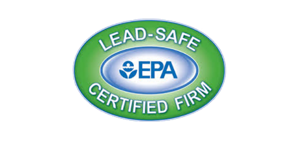Water damage can wreak havoc on your home, causing significant structural and aesthetic issues if left untreated. Whether it’s due to a natural disaster like a hurricane or flood, or a plumbing issue like burst pipes or leaking appliances, water damage can have serious consequences. The key to minimizing these effects is being able to identify the signs of water damage early on.
Key Takeaways:
- Water damage can manifest in various ways, such as peeling paint, water stains, and musty odors.
- Visible indicators of water damage include cracked or bubbling paint, warped ceilings, and soft or discolored drywall.
- Mold growth and musty smells are common signs of water damage.
- Prompt action is crucial to prevent further damage and mold growth.
- Seeking professional assistance from restoration and cleanup companies is recommended for effective detection, assessment, and restoration of water damage.
Signs of Water Damage
Identifying water damage early is crucial to minimize the extent of the damage and prevent further issues down the line. There are several common signs and symptoms that can indicate the presence of water damage in a home.
Visual clues such as peeling, bubbling, or flaking paint, small hairline cracks or a spiderwebbed pattern of cracks, and water rings on walls or ceilings are all indicative of possible water damage. Mold growth, whether visible or a musty smell in specific areas, can also be a sign. In addition, sagging or bowed ceilings, water stains, and softened drywall are clear indications that water damage has occurred.
Another way to detect water damage is by examining the flooring. Look out for any buckling, warping, or discoloration in floors, as well as cupping or crowning of hardwood floors. Musty odors and mold growth in the seams of floors and ceilings are additional red flags to watch for. If you notice a sudden increase in water utility bills or the appearance of any warped, buckled, or misshapen walls, ceilings, or floors, it’s important to investigate for water damage.
| Signs of Water Damage |
|---|
| Peeling, bubbling, or flaking paint |
| Small hairline cracks or spiderwebbed cracks |
| Water rings on walls or ceilings |
| Mold growth or musty smells |
| Sagging or bowed ceilings |
| Water stains |
| Softened drywall |
| Buckling, warping, or discoloration in floors |
| Cupping or crowning of hardwood floors |
| Musty odors or mold growth in seams |
| Sudden increase in water utility bills |
| Warped, buckled, or misshapen walls, ceilings, or floors |
Detecting and Assessing Water Damage
When suspected water damage occurs, it is essential to properly identify and assess the extent of the issue in order to take appropriate action. There are several signs that can indicate the presence of water damage in your home. These include musty smells, soft or warping drywall, visible mold, and discoloration in streaks. It is important to pay attention to these signs as they can help you catch water damage early and prevent further damage.
One way to detect water damage is through your sense of smell. Musty odors can indicate the presence of water and moisture that has seeped into your walls or floors. If you notice a persistent musty smell in a certain area of your home, it is important to investigate further to determine the source of the water damage.
Another sign of water damage is soft or warping drywall. Water can weaken the structural integrity of drywall, causing it to become soft or even warp. If you notice any areas of your walls that feel soft or have a warped appearance, it is likely that water damage has occurred and needs to be addressed.
In addition to musty smells and soft drywall, visible mold growth is a clear indication of water damage. Mold thrives in damp and humid environments, making it a common consequence of water damage. If you see any signs of mold growth, such as dark spots or fuzzy patches on walls, ceilings, or floors, it is important to take immediate action to prevent the spread of mold and address the underlying water damage.
When you suspect water damage, it is recommended to seek professional assistance from restoration and cleanup companies. They have the expertise and equipment to effectively detect, assess, and restore water damage. They can also help you determine the source of the water damage to prevent future occurrences.
To summarize, water damage can manifest in various ways and it is important to be able to recognize the signs. Musty smells, soft or warping drywall, visible mold, and discoloration are key indicators of water damage. Prompt action is crucial to prevent further damage and mold growth. If you suspect water damage in your home, it is advisable to contact professionals who can help assess and restore the damage.
Restoring and Preventing Water Damage
Restoring water-damaged areas and implementing preventative measures can safeguard your home against costly repairs and further damage. When water damage is suspected, it is crucial to address the issue promptly by stopping the source of water before beginning the cleanup process. Seeking professional assistance from restoration and cleanup companies can ensure effective detection, assessment, and restoration of water damage.
If you notice signs of water damage such as stains, peeling or flaking paint, soft or warping drywall, sounds of running water, musty smells, or visible mold, it is important to take immediate action. These indicators can signify that water has infiltrated your home, potentially leading to structural damage and mold growth. To mitigate the impact, homeowners may need to replace damaged drywall, insulation, and flooring. In cases where extensive damage or mold growth is present, it is advisable to contact professionals for thorough assessment and appropriate treatment.
Preventive Measures
Being proactive in preventing water damage is crucial to safeguarding your home. Here are some preventive measures you can take:
- Regularly inspect and maintain your plumbing system, ensuring there are no leaks or faulty connections.
- Keep gutters and downspouts clean and free from debris to prevent water from overflowing and seeping into your home’s foundation.
- Install a sump pump in your basement or crawl space to prevent water accumulation during heavy rainfall or flooding.
- Ensure proper drainage around your property by sloping the land away from the foundation and installing French drains if necessary.
- Monitor indoor humidity levels and use dehumidifiers in damp areas to prevent excess moisture that can lead to mold growth.
- Insulate pipes in cold areas of your home to prevent them from freezing and bursting during winter months.
- Regularly check and maintain your home’s appliances, such as washing machines, dishwashers, and water heaters, to prevent leaks or malfunctions.
By taking these preventive measures and being vigilant for signs of water damage, you can protect your home from the costly and damaging effects of water infiltration. Remember to consult professionals for thorough inspections, repairs, and mold treatment when necessary, ensuring the long-term integrity and safety of your property.
Conclusion
Being aware of the signs of water damage and taking swift action can save you from extensive repairs and potential health hazards caused by mold growth. Water damage can manifest in various ways, whether it’s due to natural disasters like hurricanes or storms, or as a result of burst pipes or leaking appliances. Identifying the signs of water damage early on is crucial in order to prevent costly repairs and ensure the safety and well-being of your home.
Signs of water damage can vary, but some common indicators include peeling, bubbling, or flaking paint, small hairline cracks or a spiderwebbed pattern of cracks on walls or ceilings, water rings or stains on floors or surfaces, and the presence of mold growth. Additionally, you may notice sagging or bowed ceilings, musty smells, softened drywall, or discolored streaks. These visual and sensory cues are clear indications that water damage may be present in your home.
When water damage is suspected, it is crucial to stop the source of water before initiating the cleanup process. Seeking professional assistance from restoration and cleanup companies is highly recommended for effective detection, assessment, and restoration of water damage. Stains, peeling or flaking paint, soft or warping drywall, sounds of running water, musty smells, and visible mold should be taken seriously as these are clear indications of water damage. Swift action is essential to prevent further damage and the growth of mold, which can pose serious health risks.
In cases where water damage is extensive, homeowners may need to replace damaged drywall, insulation, and flooring. It is important to contact professionals who specialize in water damage restoration for thorough cleanup, as well as mold treatment if necessary. Taking preventive measures, such as regular inspections, addressing plumbing issues promptly, and ensuring proper ventilation, can help protect your home from the damaging effects of water.
By staying alert to the signs of water damage and being proactive in addressing any issues, you can safeguard your home from this costly and disruptive problem. Remember, prevention is key, and early detection can save you both time and money in the long run.
FAQ
What does water damage look like?
Water damage can manifest in various ways and may include peeling, bubbling, or flaking paint; small hairline cracks or a spiderwebbed pattern of cracks; water rings; mold growth; sagging or bowed ceilings; water stains; musty smells; softened drywall; discoloration in streaks; cracked, bubbling, or flaking paint; buckling, warping, or discoloration in floors; cupping or crowning of hardwood floors; musty odors; mold growth in seams of floors and ceilings; sudden increase in water utility bills; warped, buckled, or misshapen walls, ceilings, and floors; peeling paint or wallpaper.
What are the signs of water damage?
Signs of water damage can include peeling, bubbling, or flaking paint; small hairline cracks or a spiderwebbed pattern of cracks; water rings; mold growth; sagging or bowed ceilings; water stains; musty smells; softened drywall; discoloration in streaks; cracked, bubbling, or flaking paint; buckling, warping, or discoloration in floors; cupping or crowning of hardwood floors; musty odors; mold growth in seams of floors and ceilings; sudden increase in water utility bills; warped, buckled, or misshapen walls, ceilings, and floors; peeling paint or wallpaper.
How can I detect and assess water damage?
To detect and assess water damage, look out for stains, peeling or flaking paint, soft or warping drywall, sounds of running water, musty smells, and visible mold. These are clear indications of water damage and should prompt further investigation and professional assistance.
How can I restore and prevent water damage?
In cases of water damage, it is recommended to seek professional assistance from restoration and cleanup companies for effective detection, assessment, and restoration. Prompt action is crucial to prevent further damage and mold growth. Homeowners may need to replace damaged drywall, insulation, and flooring and should contact professionals for extensive damage or mold treatment. Taking preventive measures such as regular maintenance and addressing leaks promptly can help protect homes from water damage.






